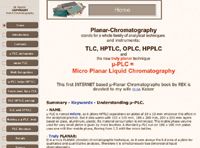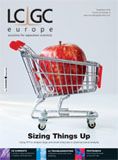Digital Update
Planar chromatography e-book; Web-based dashboard; On-demand webinars; Streamline syringe selection; Chromatography software update
Planar chromatography e-book
A website, which is an internet-based planar chromatography (PLC) book, has been created by Professor Rudolf E. Kaiser. The author, using 50 years of his own experiences in planar chromatography as well as discussions with more than 5000 colleagues from more than 55 countries, considers the steps needed to solve problems using PLC. The site discusses a range of techniques including TLC, HPTLC, OPLC and HPPLC as well as what it claims to be a 'truly planar' technique μ-PLC (micro planar liquid chromatography). What 'truly planar' means is considered, as well as the technique's implications. The history of various related techniques are given and a consideration of circular versus linear modes provide a background on the subject. Pictograms, methods and applications cover the use of the technique and a do-it-yourself guide is included to assist users in the construction of their own instrument.

www.planar-chromatography-by-kaiser.com
Web-based dashboard
Waters has announced it is now shipping its Empower 2 Business Intelligence Manager, a web-based dashboard software solution that is reported to provide rapid analysis of critical chromatography performance data for faster, more-qualified decisions on laboratory and business operations. According to the company the intuitive interface allows lab managers and system administrators using Empower 2 Enterprise Chromatography Software to fully understand and exploit the strengths of their laboratories and identify areas that need added support.
On-demand webinars
Wyatt Technology has announced the introduction of a programme of free-of-charge, on-demand webinars about light scattering and related technologies. Designed to meet the increasing demand for scientific training on macromolecular characterization instrumentation, the on-line webinar series is reported to provide comprehensive information about the company's light-scattering products and services. Current webinars are available on high-throughput automated dynamic light scattering using the DynaPro Plate Reader, characterizing protein–protein interactions with static light scattering and the Calypso automated protein association and aggregation system, characterizing protein conjugates and their aggregates by light scattering and field flow fractionation combined with multi-angle light scattering.
Streamline syringe selection
Hamilton has announced the release of a web-based syringe Selection Tool. According to the company it features a filtering function that helps users quickly identify the exact syringe, with part number, to fit their application. The tool filters decision characteristics and narrows searches from among the company's 794 different syringes. Seven pull-down menus enable users to choose where to start their search from a choice of values — syringe type, volume, series number, termination, gauge, length or point style. The selection tool also presents more product details at the individual part number level, whereas information was previously displayed for families of products.

www.hamiltoncompany.com/Apps/syringeTool.php?category
Chromatography software update
DataApex has released an update of its Clarity chromatography software. This version brings new control drivers covering Hitachi LaChrom Elite HPLC system (L-2100/2130 pump, L-2200 autosampler, L-2300 Column Oven, L-2400 UV Detector) and the latest HTA autosampler HT800L. According to the company the software can now control more than 250 instruments. This version enhances several functionalities that bring users more comfort during installation and configuration. The update is available for Clarity users free of charge.

Altering Capillary Gas Chromatography Systems Using Silicon Pneumatic Microvalves
May 5th 2025Many multi-column gas chromatography systems use two-position multi-port switching valves, which can suffer from delays in valve switching. Shimadzu researchers aimed to create a new sampling and switching module for these systems.
Studying Cyclodextrins with UHPLC-MS/MS
May 5th 2025Saba Aslani from the University of Texas at Arlington spoke to LCGC International about a collaborative project with Northwestern University, the University of Hong Kong, and BioTools, Inc., investigating mirror-image cyclodextrins using ultra-high performance liquid chromatography–tandem mass spectrometry (UHPLC–MS/MS) and vibrational circular dichroism (VCD).

.png&w=3840&q=75)

.png&w=3840&q=75)



.png&w=3840&q=75)



.png&w=3840&q=75)










